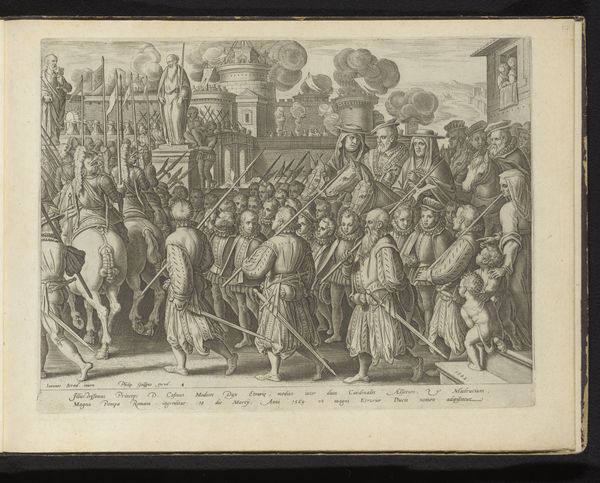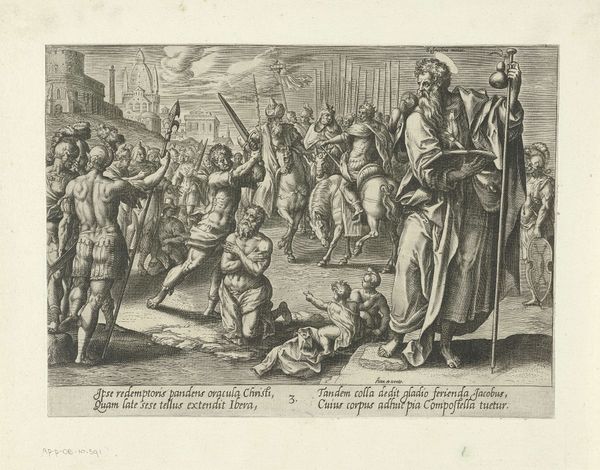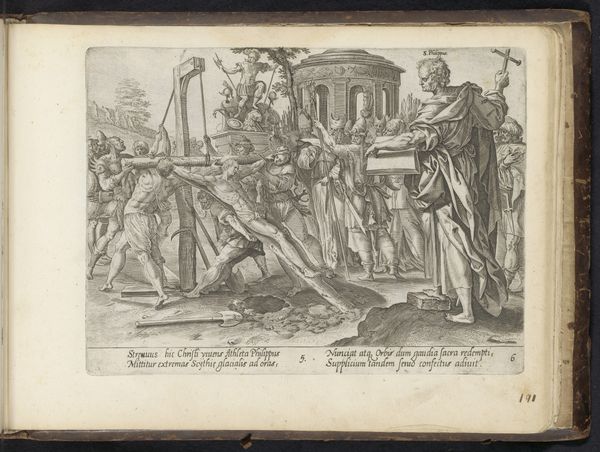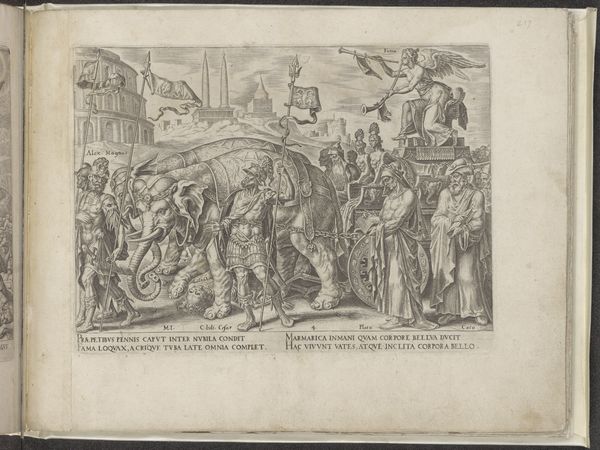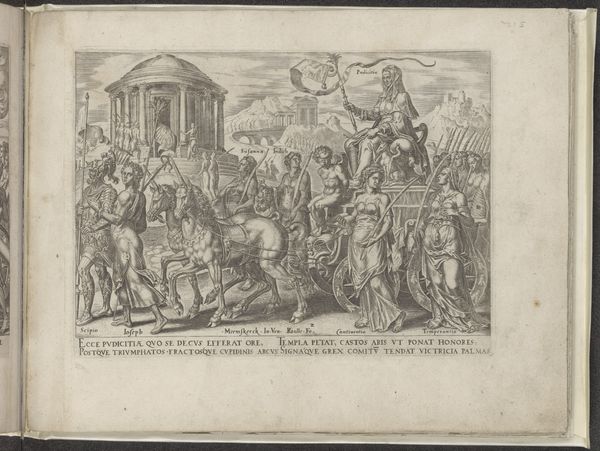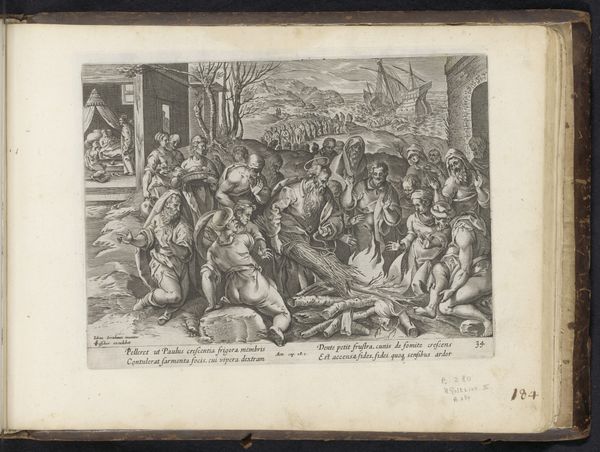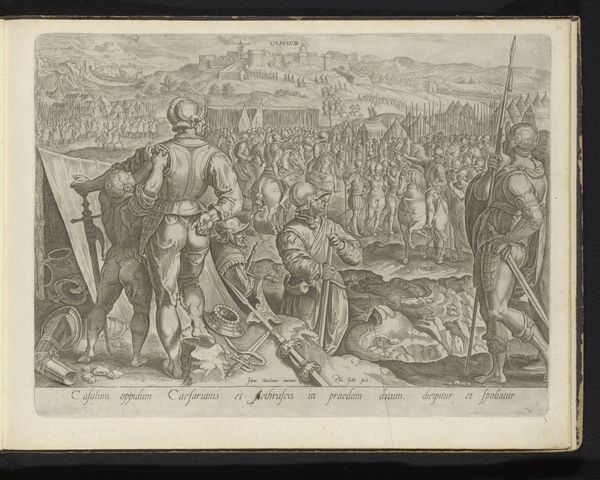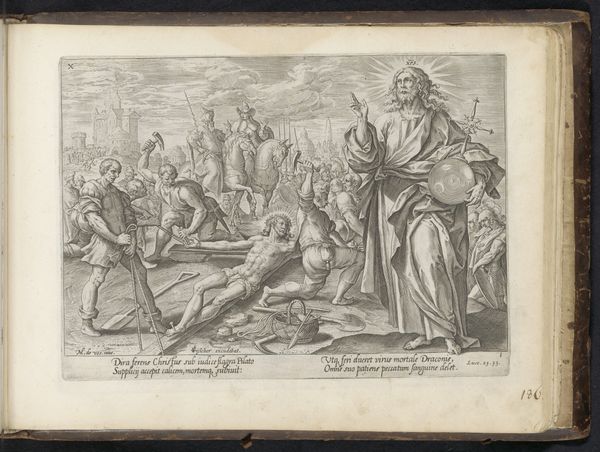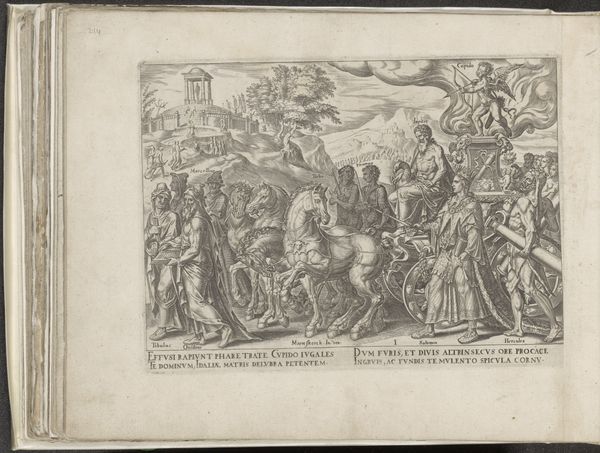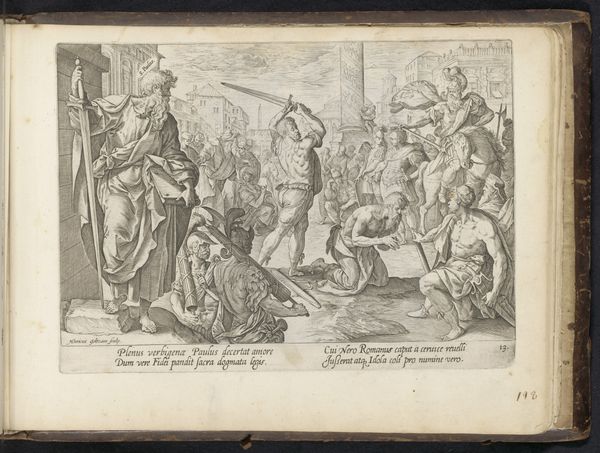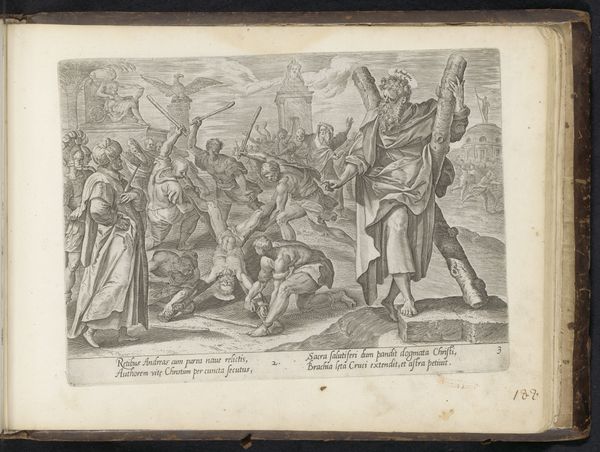
print, engraving
#
medieval
#
pen drawing
# print
#
landscape
#
figuration
#
history-painting
#
academic-art
#
engraving
Dimensions: height 222 mm, width 298 mm
Copyright: Rijks Museum: Open Domain
Curator: This print, "Giovanni de' Medici omsingeld te Rome," from 1583, was produced by Philips Galle. The Rijksmuseum holds it in its collection. What are your first thoughts on viewing this piece? Editor: Well, it feels like a carefully orchestrated scene. I'm struck by the texture of the engraving; the sheer number of lines create a palpable tension and drama as we consider de' Medici’s situation, stuck between the proverbial “rock and a hard place”. Curator: Precisely! Galle's engraving would have been part of a series circulated to influence public perceptions, narrating Medici's life, so the "texture" is key to mass consumption of this type of political agenda. Think about how engravings functioned as easily reproducible narratives. This is more than decoration. Editor: I see your point. Considering it as a functional object, its relatively small scale suggests its intimate and portable nature. This print becomes a tangible element in broader power dynamics of the time, shaping perceptions of historical figures like Medici. I find the scale of figures in relation to the landscape almost theatrical. Do you think the level of detail is at odds with what would amount to a political poster? Curator: Detail was desirable and spoke to quality craftsmanship even in popular prints of this era; look closely at how the human bodies are emphasized over the built structures behind the figures and statues looming above—their means of defense with spears and swords become material declarations of their stance towards power and authority. I'd also argue that the background hints at social upheaval. How do these elements affect our understanding of the portrayed event? Editor: I see that interplay of the political power on display through this single piece. It speaks volumes about how imagery shaped the socio-political sphere. It all brings into focus the very human and very fraught moment depicted within the broader theater of historical narrative and material objecthood. Curator: Right, looking beyond mere aesthetic appeal, we can use prints like these to explore power and ideology during this specific historical context and also the means of material production and circulation that supported it.
Comments
No comments
Be the first to comment and join the conversation on the ultimate creative platform.
